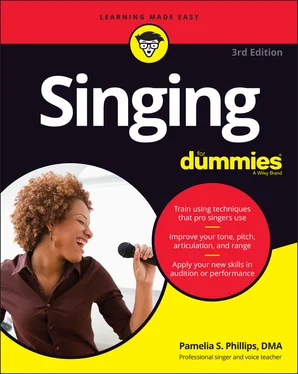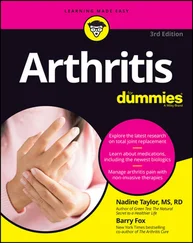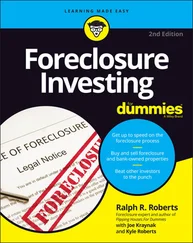Mezzo subdivisions in the classical world include light lyric coloratura, full lyric coloratura, light lyric, full lyric, and dramatic. The dramatic mezzo is similar to the dramatic soprano. To be fair to the sopranos, I confess that dramatic mezzos sometimes sing roles written for the dramatic soprano. You go, girls!
Mezzo belter: A mezzo belter doesn’t belt as high as the soprano belter. She has a heavier chest voice and is more comfortable singing material that’s lower. Listen to these singers to hear the sounds of mezzo belters: Adele, Pearl Bailey, Kaye Ballard, Carol Burnett, Carol Channing, Janet Jackson, Angela Lansbury, Rihanna, and Leslie Uggams.
Common performance roles: The mezzo is often the mother, the witch, or the sleazy girl in town. Her roles include such fun ones as Miss Hannigan in Annie, Mrs. Potts in Beauty and the Beast, Carmen in the opera Carmen, Amneris in Aïda, and Aunt Eller in Oklahoma!
Naming names: Famous mezzos you may know include Teresa Berganza, Toni Braxton, Grace Bumbry, Karen Carpenter, Patsy Cline, Denyce Graves, k. d. lang, Lorrie Morgan, and Shirley Verrett (mezzo who later became a soprano). Unless you hear the pop singer vocalize, it’s harder to tell if they’re a soprano or mezzo.
You can find more information about selecting appropriate songs for your voice in Chapter 16and a list of songs for different voice types in Appendix A.
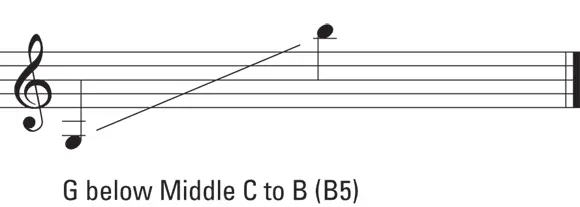
© John Wiley & Sons, Inc.
FIGURE 2-2:Mezzo range.
Highest range of the dudes: Tenor
Thanks to the Three Tenors, the Irish Tenors, and even Three Mo’ Tenors, you probably have a good idea of what a tenor sounds like. The following can help:
Range: The tenor range, shown in Figure 2-3, is about two octaves, with many singing a little lower than C (second space in bass clef) and a little higher than the male High C (third space treble clef).
Register: The tenor voice doesn’t make a huge transition from his lower voice to his middle voice. His transition into his middle voice occurs around D just above Middle C or the E-flat just above Middle C and then a transition into head voice around G or A-flat above Middle C.
Strength: The tenor’s strength is his head voice.
Voice tone: The tenor voice is usually bright and ringing.
Weakness: His weakness is often his chest voice.
Subdivisions: In musical theater, a subdivision of the tenor, called the baritenor, reigns. This voice type is someone with the power to project in the middle voice and the higher, ringing money notes of the tenor. The other voice type that you frequently hear in the opera world is the countertenor — a male singer who sounds like a female. This voice type sings in the same range as the mezzo (sometimes soprano) and sounds similar. When you’ve heard the countertenor singing enough, you can distinguish him from a mezzo. Until then, just enjoy the unique quality that these gentlemen bring to the singing world.
Tenor subdivisions in the classical world include light lyric, full lyric, dramatic, and heroic. The heroic tenor is also called a dramatic tenor or heldentenor — the guy who has a large voice with great stamina. Don’t challenge him to a singing contest at the local pub.
Common performance roles: The tenor is almost always the lead who wins the girl at the end of the show. Examples include Rodolfo in La Bohème, Don José in Carmen, Tony in West Side Story, Billy in 42nd Street, and Rolf in The Sound of Music.
Naming names: Famous tenors you may know include Plácido Domingo, José Carreras, and Luciano Pavarotti, whom you may recognize as the Three Tenors. You also may know Elton John, Jonas Kaufmann, Bruno Mars, Maxwell, Justin Timberlake, and Stevie Wonder.
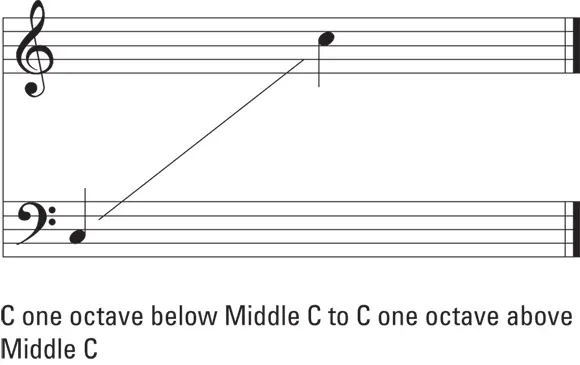
© John Wiley & Sons, Inc.
FIGURE 2-3:Tenor range.
Bass is the lowest of the voice types. The bass is the guy who sings all the cool low notes in the barbershop quartet. Here are some characteristics:
Range: His range is usually F (below the bass clef staff) to E (first line treble clef) but can be as wide as E-flat to F (see Figure 2-4).
Register transitions: The bass changes from chest voice into middle voice around A or A-flat just below Middle C and changes into head voice around D or D-flat just above Middle C.
Strength: His chest voice is his strength.
Voice tone: His voice is the deepest, darkest, and heaviest of the male voices.
Weakness: His head voice is his weakness.
Subdivisions: Filling in the middle between tenor and bass is the baritone. Baritones are very common. Young bass singers often start out as a baritone and then the voice changes. The baritone can usually sing from an A (first space bass clef) to F (first space treble clef) below the male High C. The bass-baritone has some height of the baritone and some depth of the bass; his range is usually A-flat (first space bass clef) to F (first space treble clef) and sometimes as high as G below the male High C. The baritone’s register transitions usually occur at the B or B-flat just below Middle C and the E or E-flat above Middle C.
Bass subdivisions include the comic bass (funny guy in the show), as well as lyric and dramatic bass. His subdivision buddy, the baritone, also comes in different shapes and sizes: light lyric baritone, full lyric baritone, and bass baritone.
Common performance roles: The bass or baritone is often the villain, father, or older man. Examples include Ramfis in Aïda, the Mikado in The Mikado, and Jud Fry in Oklahoma! Some exceptions to this villain image are King Arthur in Camelot, Porgy in Porgy and Bess, and the Toreador in Carmen.
Naming names: Famous basses you may know include Kurt Moll, René Pape, and Samuel Ramey. Famous bass-baritones include Trace Adkins, José van Dam, Simon Estes, William Warfield, and Barry White. Baritones include Brian Stokes Mitchell, John Raitt, and Tom Wopat.

© John Wiley & Sons, Inc.
FIGURE 2-4:Bass range.
In classical music or the opera world, voice types can be further divided into categories based on the size and agility of the voice. The first four terms are in order like the soda sizes at the fast-food joint. Light is the small, lightweight cup, and dramatic is the cup so large that it won’t fit in the cup holder in your car.
Light: A bright, youthful, agile voice.
Lyric: A medium-sized voice with a warm color that’s comfortable singing long, even phrases. Lyric is appropriate for a romantic character.
Full: A louder, stronger voice that doesn’t necessarily sing fast lines as easily as a light voice.
Dramatic: A voice that’s even louder than a full voice and sings a heavier repertoire, such as Wagner. Dramatic voices can peel the paint off the wall from 50 paces. These voices are big and heavier than full lyric voices; they aren’t known for subtlety — they’re all about power and strength.
Coloratura: A flexible voice that moves easily through fast lines in the music.
Читать дальше
